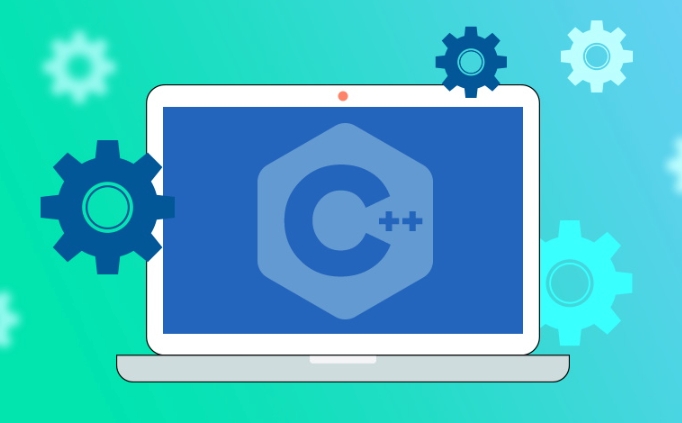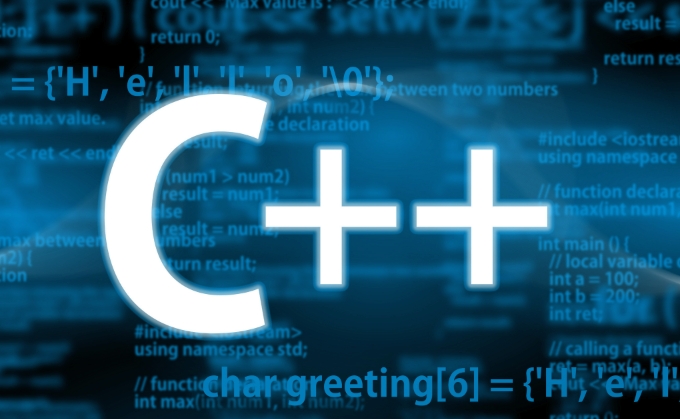What is a null pointer in C ?
A null pointer in C is a special value indicating that a pointer does not point to any valid memory location, and it is used to safely manage and check pointers before dereferencing. 1. Before C 11, 0 or NULL was used, but now nullptr is preferred for clarity and type safety. 2. Using null pointers helps avoid accessing invalid memory, improves code safety, and prevents undefined behavior from uninitialized pointers. 3. Common use cases include initializing pointers, checking before dereference, returning from functions on failure, and marking unused entries in data structures. 4. The keyword nullptr is a literal of type std::nullptr_t, making it more readable and less error-prone, especially in function overloading contexts.

A null pointer in C is a special value that indicates a pointer doesn't point to any valid memory location. It's essentially a way to say, "this pointer isn't pointing at anything right now." Before C 11, people often used 0 or NULL for this purpose, but now the preferred and more readable way is to use nullptr.

Why Null Pointers Matter
You'll often run into situations where you need to check if a pointer is valid before using it. Trying to access memory through a pointer that isn't set correctly can crash your program or cause unpredictable behavior. That’s why setting pointers to nullptr when they aren’t in use — and checking them before dereferencing — is a good habit.

- Helps avoid accessing invalid memory
- Makes code safer and easier to debug
- Prevents undefined behavior from uninitialized pointers
Using nullptr in Modern C
Since C 11, nullptr has been the standard way to represent a null pointer. It's not just a keyword; it's a literal of type std::nullptr_t, which makes it clearer in code and avoids confusion with the integer 0.
For example:

int* ptr = nullptr;
if (ptr) {
// This block won't run because ptr is null
}Compared to older styles like:
int* ptr = NULL; // Common before C 11, but less precise
or even worse:
int* ptr = 0; // Works, but looks like an integer assignment
Using nullptr improves readability and helps prevent bugs, especially with function overloading where types matter.
When and How to Use Null Pointers
There are several common scenarios where null pointers come in handy:
- Initialize pointers before you assign them a valid address.
- Check before dereferencing, like before using
*ptr, make sure it's not null. - Return values from functions that might fail to find or allocate memory.
- Mark removed or unused entries in data structures like linked lists or trees.
Here's a quick pattern you’ll see:
int* search(int arr[], int size, int target) {
for (int i = 0; i < size; i) {
if (arr[i] == target)
return &arr[i];
}
return nullptr; // Indicates not found
}And then later:
if (ptr != nullptr) {
std::cout << *ptr << std::endl;
} else {
std::cout << "Not found" << std::endl;
}It’s not complex, but it’s easy to overlook checking pointers — and that’s where problems start.
The above is the detailed content of What is a null pointer in C ?. For more information, please follow other related articles on the PHP Chinese website!

Hot AI Tools

Undress AI Tool
Undress images for free

Undresser.AI Undress
AI-powered app for creating realistic nude photos

AI Clothes Remover
Online AI tool for removing clothes from photos.

Clothoff.io
AI clothes remover

Video Face Swap
Swap faces in any video effortlessly with our completely free AI face swap tool!

Hot Article

Hot Tools

Notepad++7.3.1
Easy-to-use and free code editor

SublimeText3 Chinese version
Chinese version, very easy to use

Zend Studio 13.0.1
Powerful PHP integrated development environment

Dreamweaver CS6
Visual web development tools

SublimeText3 Mac version
God-level code editing software (SublimeText3)

Hot Topics
 What is a POD (Plain Old Data) type in C ?
Jul 12, 2025 am 02:15 AM
What is a POD (Plain Old Data) type in C ?
Jul 12, 2025 am 02:15 AM
In C, the POD (PlainOldData) type refers to a type with a simple structure and compatible with C language data processing. It needs to meet two conditions: it has ordinary copy semantics, which can be copied by memcpy; it has a standard layout and the memory structure is predictable. Specific requirements include: all non-static members are public, no user-defined constructors or destructors, no virtual functions or base classes, and all non-static members themselves are PODs. For example structPoint{intx;inty;} is POD. Its uses include binary I/O, C interoperability, performance optimization, etc. You can check whether the type is POD through std::is_pod, but it is recommended to use std::is_trivia after C 11.
 How to pass a function as a parameter in C ?
Jul 12, 2025 am 01:34 AM
How to pass a function as a parameter in C ?
Jul 12, 2025 am 01:34 AM
In C, there are three main ways to pass functions as parameters: using function pointers, std::function and Lambda expressions, and template generics. 1. Function pointers are the most basic method, suitable for simple scenarios or C interface compatible, but poor readability; 2. Std::function combined with Lambda expressions is a recommended method in modern C, supporting a variety of callable objects and being type-safe; 3. Template generic methods are the most flexible, suitable for library code or general logic, but may increase the compilation time and code volume. Lambdas that capture the context must be passed through std::function or template and cannot be converted directly into function pointers.
 What is the mutable keyword in C ?
Jul 12, 2025 am 03:03 AM
What is the mutable keyword in C ?
Jul 12, 2025 am 03:03 AM
In C, the mutable keyword is used to allow the object to be modified, even if the object is declared as const. Its core purpose is to maintain the logical constants of the object while allowing internal state changes, which are commonly found in cache, debug counters and thread synchronization primitives. When using it, mutable must be placed before the data member in the class definition, and it only applies to data members rather than global or local variables. In best practice, abuse should be avoided, concurrent synchronization should be paid attention to, and external behavior should be ensured. For example, std::shared_ptr uses mutable to manage reference counting to achieve thread safety and const correctness.
 What is memory alignment and why is it important in C ?
Jul 13, 2025 am 01:01 AM
What is memory alignment and why is it important in C ?
Jul 13, 2025 am 01:01 AM
MemoryalignmentinC referstoplacingdataatspecificmemoryaddressesthataremultiplesofavalue,typicallythesizeofthedatatype,whichimprovesperformanceandcorrectness.1.Itensuresdatatypeslikeintegersordoublesstartataddressesdivisiblebytheiralignmentrequiremen
 What is an abstract class in C ?
Jul 11, 2025 am 12:29 AM
What is an abstract class in C ?
Jul 11, 2025 am 12:29 AM
The key to an abstract class is that it contains at least one pure virtual function. When a pure virtual function is declared in the class (such as virtualvoiddoSomething()=0;), the class becomes an abstract class and cannot directly instantiate the object, but polymorphism can be realized through pointers or references; if the derived class does not implement all pure virtual functions, it will also remain an abstract class. Abstract classes are often used to define interfaces or shared behaviors, such as designing Shape classes in drawing applications and implementing the draw() method by derived classes such as Circle and Rectangle. Scenarios using abstract classes include: designing base classes that should not be instantiated directly, forcing multiple related classes to follow a unified interface, providing default behavior, and requiring subclasses to supplement details. In addition, C
 How to generate a UUID/GUID in C ?
Jul 13, 2025 am 02:35 AM
How to generate a UUID/GUID in C ?
Jul 13, 2025 am 02:35 AM
There are three effective ways to generate UUIDs or GUIDs in C: 1. Use the Boost library, which provides multi-version support and is simple to interface; 2. Manually generate Version4UUIDs suitable for simple needs; 3. Use platform-specific APIs (such as Windows' CoCreateGuid), without third-party dependencies. Boost is suitable for most modern projects, manual implementation is suitable for lightweight scenarios, and platform API is suitable for enterprise environments.
 C vs Python performance
Jul 13, 2025 am 01:42 AM
C vs Python performance
Jul 13, 2025 am 01:42 AM
C is usually faster than Python, especially in compute-intensive tasks. 1.C is a compiled language that directly runs machine code, while Python executes while interpreting and executing, which brings additional overhead; 2.C determines the type during compilation and manages memory manually, which is conducive to CPU optimization, and Python dynamic typing and garbage collection increase burden; 3. It is recommended to be used for high-performance scenarios such as game engines and embedded systems. Python is suitable for data analysis and rapid development scenarios with priority efficiency; 4. Performance testing is recommended to use time tools, eliminate I/O interference, and average values multiple times to obtain accurate results.
 Understanding move assignment operator in C
Jul 16, 2025 am 02:20 AM
Understanding move assignment operator in C
Jul 16, 2025 am 02:20 AM
ThemoveassignmentoperatorinC isaspecialmemberfunctionthatefficientlytransfersresourcesfromatemporaryobjecttoanexistingone.ItisdefinedasMyClass&operator=(MyClass&&other)noexcept;,takinganon-constrvaluereferencetoallowmodificationofthesour







